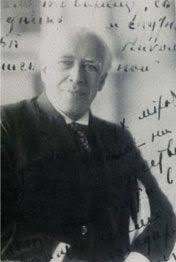Introduction:
Konstantin Stanislavsky (18.01.1863-07.08.1938) was born in a rich industrialist family. He regularly attended plays, circus, ballets and the opera. By the age of 14 he was acting in performances at the family estate, where his father had built a theatre. Until the age of thirty-three, Stanislavsky performed and directed only as an amateur. Later, on 22nd June 1897, he met Vladimir Nemirovich-Danchenko, a successful playwright and teacher in the Moscow Philharmonic Society School, at a Moscow restaurant to reform the Russian stage and finally they found Moscow
Art Theatre. His international success in the early 1900s is tied to the rise of Anton Chekhov's popularity as a playwright. So, Stanislavsky watched few dramas , The Seagull, Uncle Vanya, and The Cherry Orchard. After watching the performances, Stanislavsky realized early on that Chekhov's characters could not be effectively brought to life on stage. Stanislavsky felt that the best performances were the most natural and realistic ones. Hence, he developed a set of techniques which boosts the actors to portray the characters on stage. These methods are
- The Magic if:
The actor gets an opportunity to imagine and explore more about the character. This ‘if’ is magical and can put the actor in a proper frame of mind.
- Given circumstances:
It reveals the period, time and place, cultural and socio-economic background of the character inside a story. It helps the actors to imagine the given circumstance.
- Imagination:
It talks about an actor’s capacity to treat the fictional reality which is depicted by the playwright. Stanislavsky says that an actor should be able to imagine the entire circumstance.
4. Attention:
It gives the proper shape to the imagination of the actor. The actor should not get carried away with the imagination. The actor should be able to create the proper and logical imagination with the essence of the play. Attention should be both internal as well as external, which means internally the actor should be creative for the imagination requirements whereas external attention would enable the actor to concentrate on stage.
- Relaxation of the muscles:
Stanislavsky says tension is the great enemy of the actor. It wastes actor’s energy because a tense actor can never get into the feelings of his/her part. So, the actor must relax his/her muscles before the performance so that he/she can be free with his/her movements.
- Pieces and Problems:
It deals with divisions of the roles. After dividing the role, the actor can find the problems into pieces after which all the problems may not be either useful or necessary for an actor. Basic useful problems are problems of the actor himself as a human being, problems while getting into the characters etc.
- Truth and Belief:
In real life, truth is what exists in reality, but in the stage truth does not exist in reality. In the help of “magic if” and “given circumstances” the actor can live on stage. So, the moment the actor believes in the circumstances, and situations of the play, they become real circumstances and situations for them.
- Emotional Memory:
This is the vital element of Stanislavsky’s method of acting. It explains that the memory that resides in the actor’s feeling is brought to the situations demands. In this case, the actor must be very sensitive. The actor should learn how to recall the memory of his past life experience in order give life to the character
- Communication:
Since the actor has to work on many other actors, he/she should learn how to communicate the feeling of the character he/she is portraying. Each actor should know about the thought of his/her co-actors.
10. External Aids:
Here Stanislavsky coordinates all the above elements together and put into an action. This element includes three sub elements which are reason, will and feelings of the actor. Reason helps the actor to understand the text of the play, will establishes determination and courage in the actor to perform. And feelings help the actor to transform into the character.
The method of acting suggest various pathways for actors to follow as they move towards successful performances. However, it remained experimental and dynamic to the end. His rehearsal methods reflect on how best to establish connection between actors and their roles.

